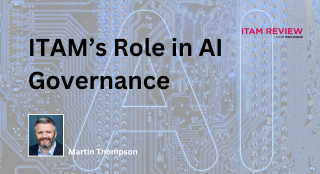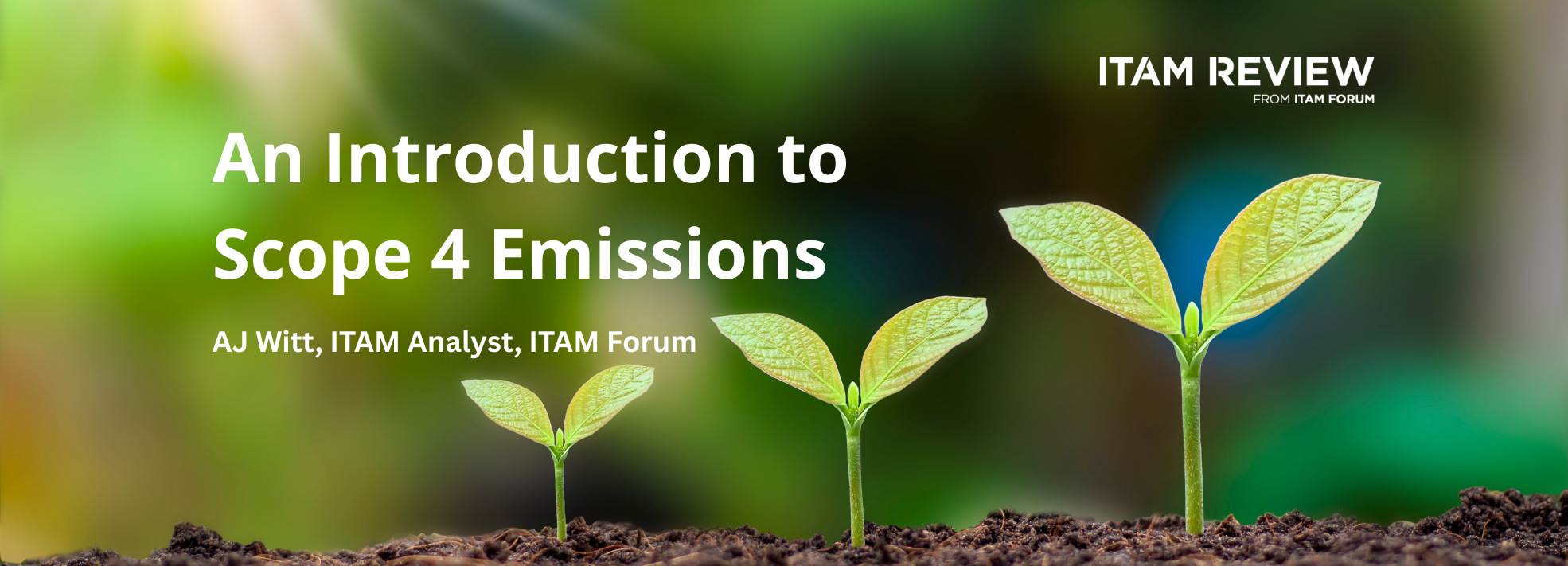IT Asset Disposition Best Practice: Selling IT Assets Prior to Decommissioning
What do you do with your IT assets as they reach the end of their lifecycle?
I recently spoke with Jeff Guthier about best practices in IT Asset Disposition or Disposal (ITAD) and discussed a novel approach to the disposal of assets which allows organisations to forecast the optimal value of assets and offload them at a profit.
Q. What is ITAD and how big an issue is it for companies?

“IT Asset Disposition is a means for the proper disposition, removal and recycling or remarketing of assets, while ensuring compliance to local and national data security and environmental regulations.”
This is a significant issue for companies of all sizes and in all industry verticals as it is not their core competency and is considered a sunk cost just to maintain compliance. They are often left to create internal processes that tie to ITAD service partners and then staff to support those programs. Companies are good at IT Asset Management (ITAM); managing acquisition cost, maintenance and uptime of their IT Assets. They usually have solid data security policies and programs in place, even if it means removing hard drives prior to the asset leaving their possession. And, they are aware of being environmentally and socially responsible. These are all core to maintaining a sustainable business. ITAD becomes secondary and reactionary.
Q. What is your background in the ITAD market?
I first learned of RoHS and WEEE as the Business Unit representative on Nokia’s Global Environmental Team. It was apparent that legislation and responsibility placed on the OEMs for take back and tracking of eWaste was creating a large, yet highly fragmented, industry for ITAD. It was equally clear that large OEMs were more concerned about brand image and the negative PR associated with their equipment ending up in landfills across the world, then they were with the cost to maintain take back programs and implementing 100% destruction and recycle policies. It occurred to me that a properly maintained “reuse” program could help off-set some of those costs and have a larger impact on protecting the environment.
My former GM at Nokia, Kevin Scanlon (now COO/Co-Founder of ServoTerra) had since moved on and ended up a local California certified collector recycler of eWaste. He had seen the industry and market potential and was brought there to take a local brick and mortar based collection facility into the board rooms of large OEMs and Contract Manufacturers to build a global reach including WEEE take back programs and remarketing of assets. I joined him there to develop the back office processes and infrastructure to support an operation on that global scale. This is where I learned the just how fragmented the offerings are in ITAD from Consignment, to Broker, to OEM Trade-in programs and the many challenges of linking those processes to downstream recycling and refining to include data security and certificates of destruction reporting.
Q. What common weaknesses do you see in ITAD processes?
- ITAD Processes are Reactionary – They are not the core competency of the company, so assets come out of use and are moved to the path of least resistance; internal storage, storage off-site, storage at consignment house. Once you decommission an asset without a plan to maximize the ROI, you are already headed down a process of increased overhead and costs to your company.
- ITAD Processes are Redundant – Consignment models are the most common ITAD service offering. The very beginning processes force redundancy for companies to log the assets they are sending to a consignment house, where the first step is to inventory the assets and report back any discrepancies. Then both companies maintain an on-going inventory of those assets to their final disposition.
- ITAD Processes are non-Transparent – The true overhead costs of consignment programs is not known to the owner of the asset. Final ROI of the ITAD program becomes blurred in the cost to inventory, tear down, recycle and maintain proper documentation. The recovery value of recycling or remarketing is often settled via a back end revenue share after the cost of doing business. The financials are easily and quickly distorted leaving the asset owner knowing they could be doing better, but not sure how. The Broker will provide the asset owner with a seemingly easy way to dispose of assets by offering pennies on the dollar for a pallet or truckload of assets. The asset owner doesn’t know the true value of their assets, but the Broker knows exactly which “golden nuggets” on that pallet or truck are going to yield high ROI.
- ITAD Processes are Fragmented – A complete ITAD program may require the consolidation of several downstream partners. The consignment house uses a local recycler which uses a national refiner. Each time the asset changes hands it enters into a different tracking and reporting process that somehow must be maintained in the original asset owner’s back office systems. The internal IT and document control to manage this is another cost of the program.
Q. Based on your experience, what ITAD best practices would you recommend?
- Proactive Asset Life Cycle Profitability Planning –Leverage the ITAM processes you currently have to streamline your ITAD programs. ITAM solutions begin with an Asset Profiler that allows the IT Manager to record the “birth” of the asset into the company network of assets. This profiler will then proactively monitor the changes to that asset as it evolves and goes through upgrades and maintenance. This is business intelligence that enables the IT Manager to remain in control of the network and strive for that .9999 uptime. That same proactive approach to maximizing ROI on capital expenditure naturally extends to IT Asset Disposition (ITAD). In fact, in today’s economy, it is necessary to have the business intelligence for planning the decommission of your assets based on current remarket values, technology refresh roadmaps and ability to supplement capital expenditure budgets for acquisition of new assets. The data required to do this already resides in your ITAM database. It simply needs to be looked at from an ITAD perspective, and managed with equally powerful and easy to use tools to support your business models and decision making.
- Know the Value of your Assets before you Decommission -IT Managers should be able to sit down with their CFOs knowing the financial impact of asset tech refresh and decommission. This includes current book value or lease buy back value as compared to current remarket value. All laid on top of depreciation curves to identify the best point in time for replacing your assets.
- Know the Assets that fall below your Preferred Technology Curve -Dynamically monitor your assets as they are upgraded and maintained against your preferred technology curves. Know which assets are lacking processor speed, disk capacity, memory, or anything quantifiable that would influence a tech refresh decision.
- Know in advance if you will Remarket or Recycle your Asset – By combining business intelligence on market valuation, book value and technology curves you can proactively plan your assets for one of two options: Remarket or Recycle. This greatly simplifies your downstream ITAD requirements and puts control of asset ROI profitability back into your core processes.
- Remarket assets yourself in a Trusted B2B Community -Maximize your ROI on assets with market value by utilizing a closed B2B community of Sellers and Buyers. Buyers that are not brokers or auction site dwellers. Your trusted high return buyers should be value added resellers, integrators and warranty repair providers that have a business need and revenue model to purchase your asset at a premium.
Q. How did ServoTerra come about?
ServoTerra was founded to address the gap between ITAM and ITAD and provide asset owners with a means for Asset Life Cycle Profitability Planning. While at the collector/recycler business, Kevin Scanlon, Karl Larson (now CIO/Co-Founder of ServoTerra) and myself saw the significant cost of building out a global foot print of warehouses, staff and infrastructure to support Consignment and collections programs for our client base. The need to cover that overhead would be passed on to our clients in service charges and left them less than satisfied with the ROI on their ITAD program. Steve Wagner (CEO/Co-Founder of ServoTerra) was at the time the VP and GM of OpSource, a SaaS based solutions provider, saw the dilemma, but more importantly the opportunity and said “gentlemen, we should solve this in the Cloud”. We put concepts to paper, Steve and Kevin got early financial advice, and ServoTerra was born in October 2008.
Q. Why ServoTerra in the cloud?
ServoTerra sits in the cloud to offer no barrier to entry; no upfront cost; no software to download and manage upgrades. Our application is easily adopted into current ITAM and back office processes. No need to change your core competencies to leverage our solution. We are the natural extension of ITAM and Data Security solutions, so much so, we can also offer those solutions to companies. The cloud also brings in a global market place to maximize the return on your assets. Bulit on Salesforce.com’s Force.com platform we offer a secure, scalable and flexible solution to help IT Mangers focus on their core responsibilities, but have the tools and business intelligence to bring value back to their companies by completing overall Asset Life Cycle Profitability Planning.
Q. A prerequisite for your service being effective is clients having a good view of their assets in the first place – how do you suggest overcoming this?
ServoTerra is truly transforming how Assets are managed for profitability. This means our clients go through a journey of growth and transformation along with us. We have partners and processes to provide new clients with asset valuation even when those assets are already decommissioned and sitting in storage. But again, this is a higher overhead initially. What we quickly demonstrate is that our market of buyers in the cloud provide on average 25% better return than traditional ITAD solutions. Then we work with our client to embrace the power of proactive planning by utilizing ITAM and Data Security solutions while assets are still on the network. By the second or third iteration in our program they see an additional 10-20% increase in ROI from knowing the right time to remarket or recycle assets. In fact our eXchange marketplace, allows asset owners to sell assets prior to decommissioning them. That is when you have truly maximized Asset Life Cycle Profitability Planning.
Read more about ServoTerra here
What other best practices, tips or experiences can you share regarding IT Asset Disposition? Let me know your views.
Can’t find what you’re looking for?
More from ITAM News & Analysis
-
The Future of ITAM
As an ITAM Industry Analyst, I’m often asked what ITAM’s future looks like. This can be a tough question to answer because when it comes to the future, there are endless possibilities. Often, it seems, some ... -
The Allure of the Cloud: What are We Chasing?
When I ask ITAM professionals about their transition to the cloud, the responses are often similar. “It wasn’t my decision.” It’s striking how many people feel this way—decisions about moving from on-premises solutions to the cloud ... -
The M&S Cyberattack: How IT Asset Management Can Make or Break Your Recovery
Marks & Spencer (M&S), the iconic UK retailer, recently became the latest high-profile victim of a devastating cyberattack. Fellow retailers The Co-Op and Harrods were also attacked. Recent reports suggest the rapid action at the Co-Op ...
Podcast
ITAM training
Similar Posts
-
The M&S Cyberattack: How IT Asset Management Can Make or Break Your Recovery
Marks & Spencer (M&S), the iconic UK retailer, recently became the latest high-profile victim of a devastating cyberattack. Fellow retailers The Co-Op and Harrods were also attacked. Recent reports suggest the rapid action at the Co-Op ... -
AI in ITAM: Insightful Signals from the Front Line
During our Wisdom Unplugged USA event in New York in March 2025, we engaged ITAM professionals with three targeted polling questions to uncover their current thinking on Artificial Intelligence—what concerns them, where they see opportunity, and ... -
How ISO/IEC 19770-1 Can Help Meet FFIEC Requirements
In the world of ITAM, the regulatory spotlight continues to intensify, especially for financial institutions facing increasing scrutiny from regulatory bodies due to the growing importance of IT in operational resilience, service delivery, and risk management. ... -
An Introduction to Scope 4 Emissions
Executive Summary For ITAM teams, sustainability is a core responsibility and opportunity. Managing hardware, software, and cloud resources now comes with the ability to track, reduce, and report carbon emissions. Understanding emission scopes—from direct operational emissions ...




